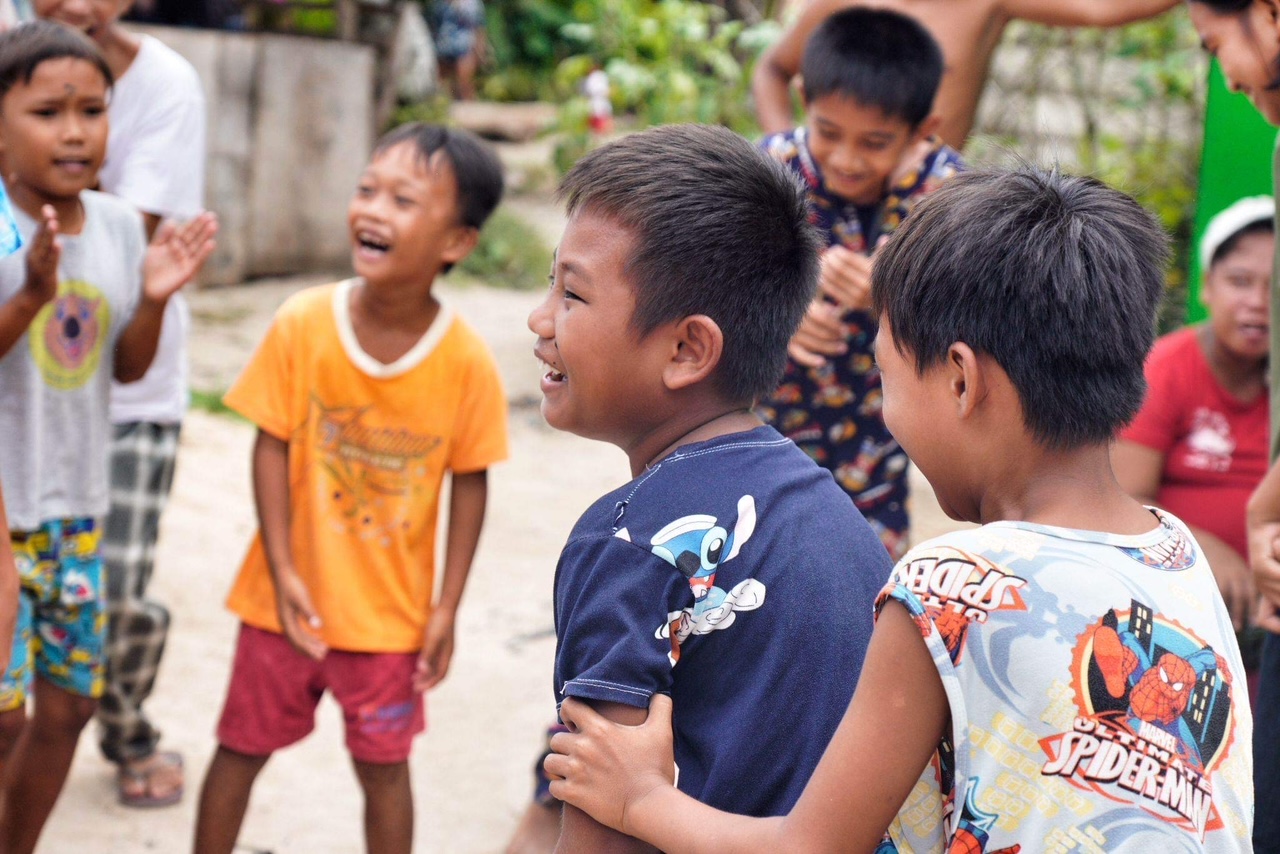In the small neighboring town of Burgos, video games, iPads and Toys R Us are non-existent. Children simply play with what surrounds them. They are taught at an early age to become resourceful. This is a very valuable skill to have living on a remote island.
Walking through the narrow, dusty streets you can’t help but notice groups of 15-20 children playing the same games their parents did as children. Games have evolved as rules have been tweaked and customized. As you watch the friendly contests, you get the feeling theses popular children’s games played throughout any given afternoon in Burgos are unique and found nowhere else in the world, including Google.
Tire & Stick Game – The setting rarely differs – A young boy, usually alone, tiny ripped shorts with a miss- matched extra small tank top and no shoes. He catches your eye with such a simple game and a smile to match. With a bamboo stick in hand he chases after an old bicycle tire from the early 90’s. The game is so simple that one would think after an hour it has to get boring for a seven year old. That same boy will push, chase and entertain himself with that tire and stick for months.
Chinese Elastics – Contestants alternate doing a high kick while turning 90 degrees in midair. Their goal is to peel down the black elastic cord with their foot. It starts around their ankle and works up to the torso, stopping at the thigh, waist, stomach, shoulders and forehead. The elastic can stretch up to seven times the original length. This simple street game entertains children for hours every day.
Flying Bee – During the hot hours of the day when most people are hiding from the blazing sun, you can find boys and girls of all ages with their eyes fixed on the ground and in attack mode. Their patience pays off as the inch and a half black bee lands on the sand. The bee digs a deep hole in the sand using its front legs like a shovel. Each scoop full of sand it gets is flung between its back legs. The bee burrows deep into the hole. The children use any scrap of plastic or wrapper to cover the exit hole, trapping the bee. As the bee comes to the surface, they use the plastic to grab the bee as quick and careful as possible. With fearless precision, they remove the thorn size stinger and tie a piece of string around the mid-section of the bee. This game also has another version using land crabs that are taken for a walk after!
Can Slide – The beach is a place for countless hours of fun. Children love to make use of anything they find. Instead of allowing cans to rust at a dumpsite, they turn them into objects for racing. On a well sloped beach, the sand is carved out into a slide track. The children will compete by tweaking their cans in whatever way they choose so to generate the most speed to make it to the bottom finish line. The one to make it to the bottom first or make it the furthest along the slide wins.
Umbrella Crane – Umbrellas are plentiful here especially during the torrential rains in the winter months. Poorly made umbrellas easily fray or break. After stripping off all the useless parts, children are left with the upper swivel and top part of the arms previously used to extend the cover of the umbrella. When all cleaned up, it resembles the arcade game to pick up a toy. After attaching a string and giving the umbrella top a spin they focus in on an object on the ground (rock, branch, seashell or flip flop.) The umbrella crane spreads out over the object and with a skillful hand motion it can be used as a crane. The heaviest and most awkward object retrieved wins the game.
Jungle Gym – Set aside the metal bars, bolts and any other materials used to build jungle gyms that fill playgrounds in the west. A bunch of trees and a set of monkey hands and feet are all you need for a true Jungle Gym. Brison and Makana learned this art well before some kids learn to walk. Kids can scale up a tree like Spiderman. It amazes me and still scares me to look up high to see kids balance as they walk carefree across branches and jump from one tree to the next. Most often the kids end up on the very top portion of the tree and leave something behind to identify they have been there. I guess a form of marking their territory.
Bottle Cap Instrument – Bottle caps never enter the garbage. They are eagerly collected by the kids who use a hammer or rock to flatten them. Using a nail, they make a hole at the centre of each bottle cap and insert a string. Spin and shake it to make music!
Flip Flop Game – Games invented using flip flops are numerous. Travelling through any village or even some cities, children can be seen in groups cheering, yelling and running around while flip flops whizz by. Whether throwing them at each other in a sort of dodge ball style, kicking them across finish lines or pinning them between the knees while hopping blind folded to make a target drop – flip flops are all FUN! Don’t be surprised if you leave your flip flops at the door of a house and come back to find them gathered in a pile and being used by laughing children.
Takyang – Even in the poorest areas it is difficult to find anything to purchase with a 5 or 10 centavo coin. They are only used for games! One favourite game is played with a coin tied inside a candy wrapper. Once placed in the bend of the arm it is launched into the air with a quick straightening of the arm. Although barely visible to the eye, the child with utmost focus and accuracy positions his/her bent arm under the falling coin and re launches it for a total of 10 times. After the 10th launch the child with jump in the air with a twist and have to kick the coin from behind their back. If the coin goes beyond the child’s head he wins the game.
Push Boat – Most children raised in the islands learn how to hold and use a machete before learning how to write. A machete is carried most places and is very useful. With the help of a father or uncle the kids take a piece of bamboo or coconut branch and carve it into a boat or in some cases a jeep. A notch is also carved out to allow a stick to be placed in it. With one hand on the other end of the stick, children will race up and down the sand streets pushing the boat or jeep.
Dampa – Elastic bands of many colors can be seen from wrist to elbow on children as evidence of winning this game. About 10-20 elastic bands are placed on the ground. The kids will take turns hitting the ground with a cupped hand. This air force separates and moves the bands one by one towards the finish line, or in some cases off a ledge. Whoever gets the most elastic bands past the finish line wins the game and takes home the opponent’s elastics.
Can ball – This is the island form of baseball. Each child depending on size chooses their ideal stick to use as a bat. The ball is a stationary can that gets hit out into the field. Home base is the final goal.
Tecks – Children love to collect miniature Japanese animation playing cards. Stacks of them can be seen bulging from their little pockets. They compete for each other’s cards. They stand face to face with the card in their open palm, slap their hands together and the cards float to the ground. The card facing up is the winner and takes home the opponent’s card.
Sling Shot / Spears – Kids become little hunters at a young age using thick discarded rubber bands, cloth, sticks and rocks. Sling shots are a favourite Children will also make a miniature spear using the broken arms of umbrellas and elastic bands. They will also wait patiently in shallow water to spear fish.
Miniature Crab Race – On your mark, get set – GO! The crabs although unaware of the rules are cheered on and guided down the sand race track by their owner. The first crab to cross the finish line earns his owner the respect and a “high 5” from his friends.




